is urban catalyst theory legitimating the term ‘power’ in contemporary architecture?
(above) busan cinema center by coop himmelb(l)au
image © duccio malagamba
currently located in turkey, berrin chatzi chousein was born in greece before graduating from the middle east technical university’s faculty of architecture. she has served as country editor at world architecture community since 2008, and in 2014 became the company’s editor-in-chief. in this essay, the turkey-based theorist asks the question: ‘is urban catalyst theory legitimating the term ‘power’ in contemporary architecture?’
— — —
in the past few decades existing european urban design theories have been inadequate for american cities. although american designers have tried to develop new tools for implementing european visions, these theories were limited in terms of applicability. as well as the discussion of practicality and applicability of these theories, there should have been an ultimate methodology, a vision in order to get achievable conditions in urban design theory. this could be ‘urban catalyst concept’ developed by wayne attoe (1977) which offers a new metaphor related with successful urban design and urbanism. when the term ‘urban catalyst’ is examined thoroughly, it can be strongly defined that the impacts of this concept should be dynamic and have far-reaching effects which revitalize the environment radically.
when we look at the examples of 21st century contemporary architecture, guggenheim museum bilbao, spain designed by frank gehry has gained in the world stage such a prestigious fame that it became the leader of radical urban transformations and regenerations of the city. still, it is called the ‘bilbao effect’ in the world-class architecture. however, most of all, it can seriously be defined as an ‘urban catalyst’ since it has changed the image of the city dramatically and I felt that it acridly needs to focus on the analyses of to a ‘power’ theme through ‘urban catalyst’ theory by exploring new urban design ideas through 4 important contemporary buildings in different countries. basically, my questions aim here at 4 important buildings designed under the title of urban catalyst and their impacts to the city in the near future. while conducting this issue, I will re-interrogate the concept of urban catalyst through 5 important questions:
• is the urban context in which the building is designed as an ‘urban catalyst’ open for revitalization? (including contextual, morphological, perceptual, factors… etc.)
• what is the goal of this project? (creating a ‘generator’, ‘anchor’ or a large-scale investment)
• what will be the impacts of the buildings designed as ‘urban catalyst’? (creating temporary/permanent effects or sense of place & authenticity)
• why are cultural buildings usually shown as ‘urban catalyst’?
• is it really a ‘power’ indicator for which the buildings influence the city dramatically?
as we all know, cultural buildings have wide-ranging effects in urban context. especially, according to f. javier monclús, emblematic projects, namely, ‘flagship projects’ referred to as ‘expos’ are directly related with the promotion of place and act as an urban catalyst in this regard because they are influential elements in terms of urban strategies. monclús’s quote undoubtedly supports the statement both why cultural buildings are shown as an urban catalyst. in this sense, 4 projects chosen for these analyses will generally cover the most important cultural projects today’s contemporary architecture; busan cinema center, busan, south korea by coop himmelb(l)au, glasgow riverside museum of transport, glasgow, UK by zaha hadid architects, lil/euralille youth centre, lille, france by JDS/julien de smedt architects, new norwegian national opera and ballet, oslo by snøhetta.
I definitely insist on the relationship between the theory of urban catalyst and a ‘power’ because this dialectic context triggers each other and we finally extrapolate this result: the building designed under urban catalyst parameters, (if they are successful) operates almost the whole city in terms of both functional and psychological also establishes its own relationship with power with the most definite projections; visual-textual-expressional.
the concept of urban catalysts
in order to understand the impacts of a ‘power’ (the term used here for an architect or his/her building) or ‘power indicator’ (the term used as ‘a representation’, an ‘identity assimilation’), we should look at the definition of urban catalyst theory which is defined for the cities as an example of good urbanism.
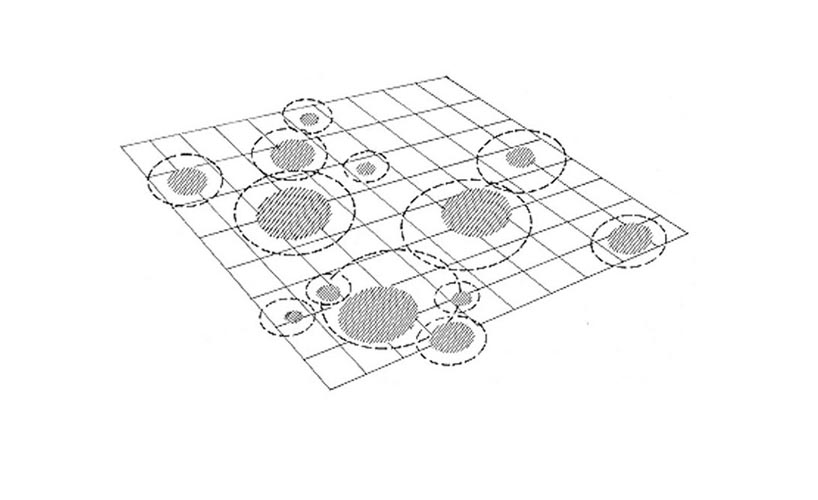
diagrammatic representation of the catalytic process
image via american urban architecture
actions, whether developments, restorations, reports, or whatever, catalyze other actions, which in turn lend impetus to others. each action is constrained too, so that the reaction does not destroy the city. the moderating aspect of the process is represented by the broken lines around the hatching.
it would be useful and versatile to make a chemical/catalytic analogy for an urban catalyst concept. the most important thing is that a catalyst should have a greater purpose than to solve a functional problem. the city shapes a catalyst, which is an important urban element and eventually shapes its context. the main purpose of an urban catalyst to provide the continuity of the regeneration of the fabric in the city and it is so powerful element that a catalyst does not act as a single or end product, it forces the environmental factors that accelerate the subsequent development. in this regard, it can be said that a catalyst is a dynamic, a physical model and very humanist approach to set up its own rules about human activities, network of transportation, infrastructure and formal decisions.
as a result of these definitions in an urban context, it is better to examine some contemporary buildings designed by famous architects all over the world. the main concern here is that when evaluating all the parameters related to urban catalyst (maybe represented later as ‘power’), this well-known architects buildings directly declared before built as an urban catalyst but are all these discourses true in this frame? or is this a kind of methodology for the market place? I will discuss this phenomenon later on. first of all, let’s look at how their projects are described.
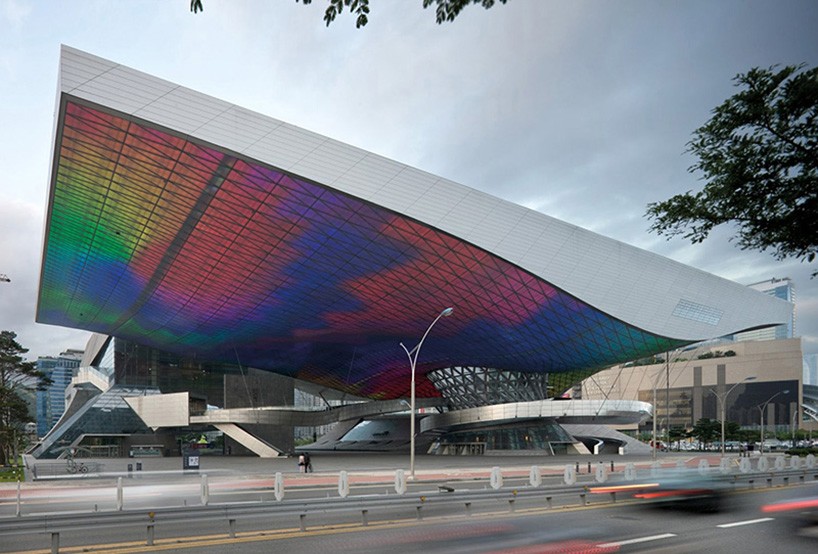
busan cinema center by coop himmelb(l)au
image © duccio malagamba
busan cinema center, busan, south korea by coop himmelb(l)au
busan cinema center in south korea designed by coop himmelb(l)au for the site of the busan international festival (BIFF) and completed in 2012. although busan cinema center is the center of open public space, it includes all the cultural facilities in its own concept. architecture, entertainment, technology, culture and public space come together and create an urban valley. the building has many functions like theaters, cinemas ,a conference center, offices, studios, restaurants etc..however, the most important thing is in the concept, an architect overlaps all the layers by creating the open-closed spaces flowing to each other. with the architect’s special term – ‘open urban center’ it houses 4,000 people in the outdoor cinema. for this reason, to find a better expression of the concept; it is asserted that busan cinema center acts as an urban catalyst for cultural exchange and transformation. even, this design underlines the sentence:’ ‘an open architecture that becomes the city’s culture catalyst’.
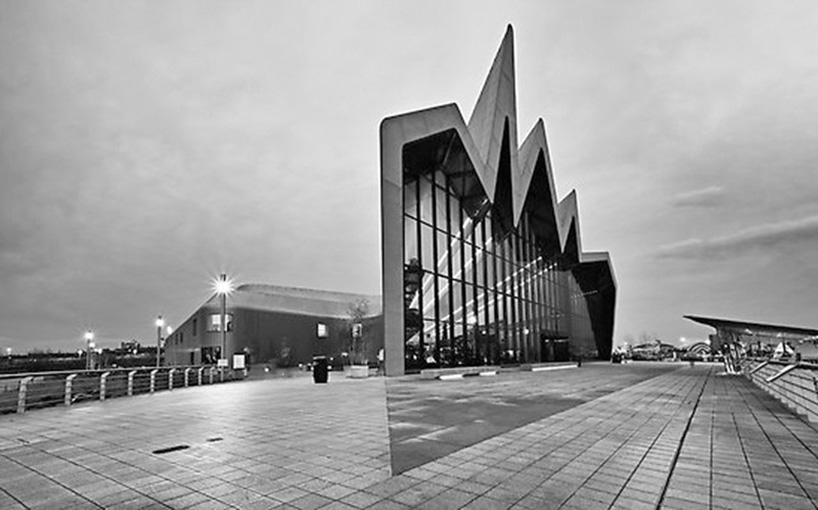
glasgow riverside museum of transport, glasgow, UK, by zaha hadid architects
image © hufton + crow / view pictures ltd / corbis
glasgow riverside museum of transport, glasgow, UK, by zaha hadid architects
glasgow riverside museum of transport designed by zaha hadid architects and completed in 2011. since the building sits on the historical development in glasgow, it sets up a dynamic relationship between the industrial area and the river. the most characteristic of the building is that it has a strong expression on the site because, although this massive building shows a sectional extrusion to the river, it acts as a ‘flowing’ structure between the city and the river. so, it also presents a symbolic representation through its longitudinal body. actually, there is another key factor that points out the building as an urban catalyst-the city itself-since the riverside museum of transport is located where significant new development has taken place, it is considered to be the part of a wider development strategy in the area.in addition, this building will be a good example of large cultural flagship development in postindustrial city. in this regard, ‘the context’ becomes more significant to be a generator for the building because it is located in reconstructing/changing development so it is expected to reconstruct the image and function of this part of the city.
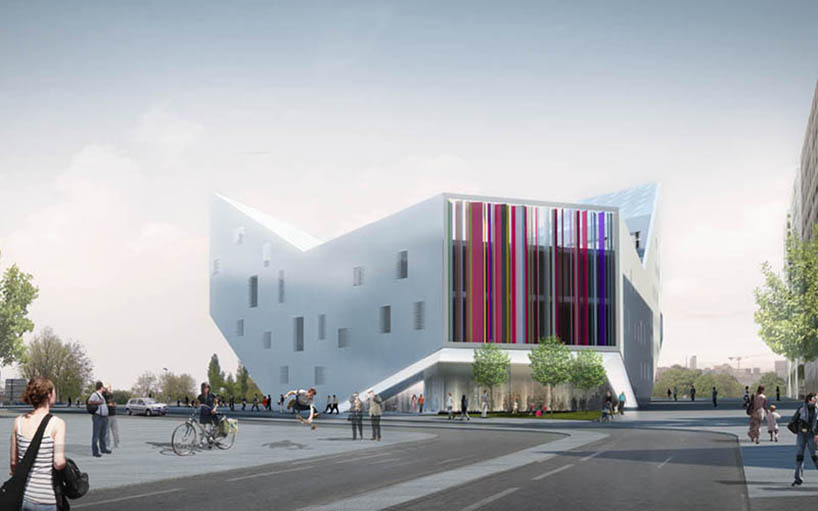
lil/euralille youth centre, lille, france
image © JDS / julien de smedt architects
lil/euralille youth centre, lille,france by JDS/julien de smedt architects
euralille youth centre is located in lille, france which is presented as the most attractive place for the tourist destination because the place is very vivid for business environment and congress also to live and study. euralille youth centre is a concept project, designed by JDS architects and the project serves as youth hostel, kindergarten and office. the most important phrase here is that while starting the project, the idea emerges from creating an urban catalyst concept when we evaluate the contextual factors in the area, lille takes place in a very important hub for multipurpose activities. moreover, the city has an important legacy throughout the history in terms of conquest and reconquest. the other assertive discourse about the project is the combination of three different programs solved in each point of the triangle with a maximum privacy and this affirmed assertion interrelates with ‘ a catalyst’ and ‘the context’ but it is quite controversial issue whether some contextual parameters are enough or not, to be called it as an urban catalyst.
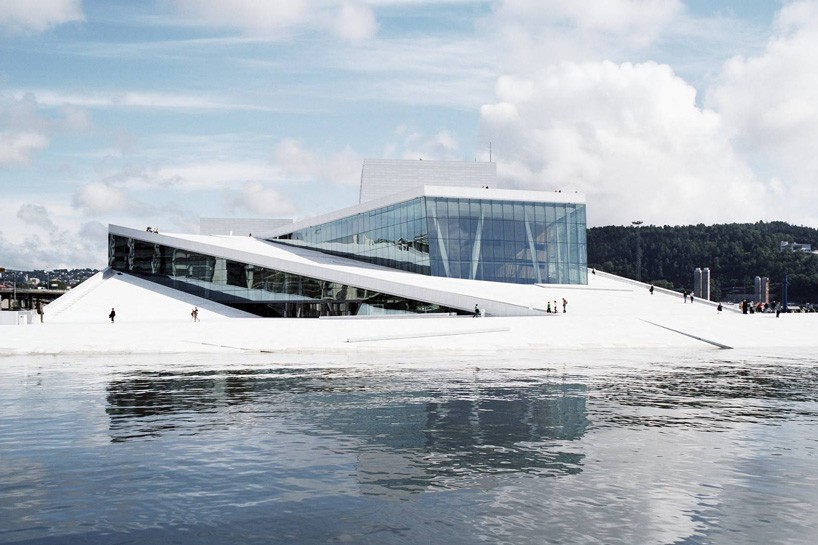
new norwegian national opera and ballet by snøhetta
image © snøhetta
new norwegian national opera and ballet, oslo by snøhetta
new norwegian national opera and ballet is one of the most prestigious projects in the world designed by snøhetta which is very famous oslo-based studio. new norwegian national opera and ballet consists of several terms in its architectural design frame, as can be seen from its massive image in the city, the building sets up a direct relationship between the exterior and interior. the building has such a characteristic value that people can easily read this sculptural approach from outside. when the building evaluated within this framework-as an urban catalyst, the location of oslo opera house is very critic because it sits on the redevelopment area throughout the industrial waterfront. so, all these inputs cause the building to be called as an urban catalyst or a generator and francis rambert, the chair of the jury, supports this claim by expressing his opinions about the building: ‘the norwegian national opera and ballet in oslo is more than just a building. it is first an urban space, a gift to the city. the building can be considered a catalyst of all the energies of the city and is emblematic of the regeneration of its urban tissue.” indeed, it can be seen that all these statements ensure three of our questions above mentioned but still it is very problematic in terms of its temporary or permanent effects to the city and for its ‘power’ indicators in oslo.
— — —
after discussing four projects in a detailed way, now we can try to answer all these questions one by one as related to the projects,which are so-called as ‘urban catalyst’.
the contextual factors are important parameters for the design project in order to be titled as an urban catalyst because these factors are directly related to the design and its spatial context to force other subsequent developments. all these critical considerations can be regarded as morphological, perceptual, social, visual, functional and temporal. since all the requirements involve the design and its layout also the relationship between the form and the landscape, the strategy of new developments in the urban fabric becomes more questionable. so, when we look at the projects above, only two of them fit in these rules and can stimulate the context because they are located in the area which is certainly open to revitalization.
creating ‘a generator’ or ‘anchor’ may be increase the catalytic reaction in the context but sternberg (2002) says that all generators can not act as a catalyst. so, increasing the human movements, the traffic or activity is not a measurement to revive the urban fabric and there must be other prerequisites to allow other new developments ,that is, a catalytic project should create a traffic that allows other developments to survive. in that case, we can accept just two of our projects, glasgow riverside museum of transport and oslo opera house, as a generator or anchor but that statement is again discussable because we do not see the effects of the projects in the long term, they are just a prediction or a desire about the future of the project.
in order to create a successful urban catalyst, the sense of place & authenticity should display its effect perennially because the interaction between people and settings creates also a symbolic value and people give a meaning to the building in order to be remembered in a different way. moreover, a successful physical features have a dominant impact on people’s perception, social behavior and activity so it can be claimed that perception is the two stage-process in which a person receives signals from a setting (place) and then organizes those signals to give them meaning. I suppose that to discuss the impacts of these projects presented at the beginning of the text are almost impossible because we can not know the feelings of people about the projects maybe to make an interview with some people living around could be better, in this way; we can have an idea about people and their surroundings and we can measure the success of the projects from different points of view.
cultural buildings play an important role to enhance the city image and tourist attraction and it is very well-known that museums, galleries, art centers, concert halls identified with the city has created one part of the cultural revitalization strategies. since cultural projects are considered as urban tourist draws, they were expected to make some contributions to the local economy and this claim proves that culture do more than business of cities. as I have discussed before they turn into a symbol, an icon in the city and declared to a public display like ‘expos’. these activities should not be considered just as cultural event, exhibition, tourist attraction or so on, they reveal some irreversable notions in association with the city; ‘remembrance’ and ‘amnesia’. if you set your own rules of some specific cultural projects in an urban regeneration, people’s behaviors or activities can be controlled by this way because cultural activities are significant factors in how individuals choose where to live, entertain and work.
‘power’ meaning in social science and politics is the ability to influence the behavior of people. when viewed from this aspect, this dialectic interaction between people and built environment both impacts the existing society and redefines/rebuilds new culture in a good urbanism. still, the boundaries of ‘power’ can not be measured in terms of good urbanization or they are not certain in this respect because there are several inputs that shape the city through urban catalyst theory. well, when you realize all the parameters in the city, is it really a ‘power’ indicator for people or the society? no! – at least not enough because it is possible to inject all variables in urban catalyst approach theoretically but ‘power’ is very comprehensive term and ‘power’ is not working with architectural aesthetic and formal preferences or not a visual metaphor so ‘power’ should have the capacity to change others’ states through rewards and punishments. the influences of ‘power’ to the cities should be observed via social relationships because it becomes a kind of ‘an authority’ ,’a control mechanism’ causes action-reaction discourse in a formal or informal way.
to sum up, even if all contemporary projects that we have discussed at the beginning of the writing declared as an urban catalyst, it can be easily seen that they do not provide multiple prerequisites to be a representation of ‘power’ in the urban fabric. ‘power’ is definitely timeless and to speculate on the effects of built architecture for now can end up irreversible steps. perhaps, it is better to avoid creating a causal link through these buildings because these buildings, in principal, do not meet all the requirements of an urban catalyst theory but even if it was, again they can not be titled as ‘the power of architecture’.
— — —
designboom has received this project through its ‘DIY submissions’ feature, which welcomes readers to submit their own work for publication. see more designboom readers submissions here.
PRODUCT LIBRARY
a diverse digital database that acts as a valuable guide in gaining insight and information about a product directly from the manufacturer, and serves as a rich reference point in developing a project or scheme.
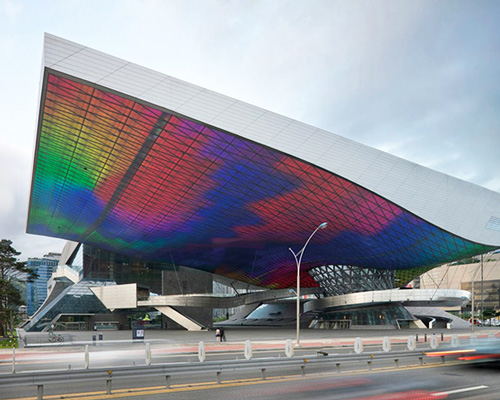
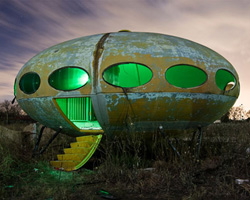
![[ours] hyper localization of architecture explores sustainable archetypes](https://static.designboom.com/wp-content/dbsub/390885/2015-01-31/thumb_2_1422717724_b02a2db420f7a797b4be5dcc20a87f19.jpg)




